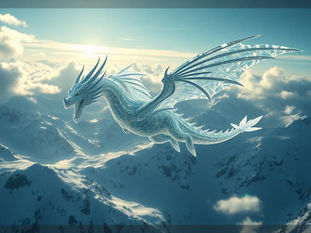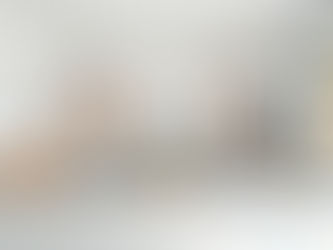
How to Create Stunning, Cohesive Images for Your Website Design Using AI
May 2
5 min read
0
2
0

Finding the perfect images for a client website can be a real challenge. Standard stock photos often look generic, and client photos might be limited. What if you could create custom, branded images that perfectly match your design vision and your client's brand? AI image generators like Midjourney make this possible. We recently sat down with Squarespace expert Diane Whitten of Sway Rise Creative, who shared her process for using Midjourney to create unique visuals for web design.
Why Use AI for Website Images?
Web designers know that image quality makes a huge difference. Even the best design struggles if the visuals aren't strong. Traditionally, getting custom, high-quality imagery meant expensive photoshoots or relying on stock sites where you see the same images everywhere.
Tools like Midjourney offer a new way. You can create images that fit your client's exact needs, demographics, and brand aesthetic. This goes beyond the website itself, extending to social media and other marketing materials, ensuring a consistent look everywhere.
Seeing AI in Action
Diane shared inspiring examples where AI-generated images significantly enhanced online presence. Seeing how sites use unique visuals, even illustrations or caricatures, shows how custom art can drive results.
A standout example was the "Drinking With Chicken" site. While its complex, layered look featured beautiful photography and illustrations (all created through a traditional, likely expensive shoot), it highlighted the power of custom branded imagery to create a truly unique experience.
Diane then showed her own work. Using AI, she created entire suites of images for projects like a Square Kicker shop item and a sales page. These images were cohesive, sharing the same color scheme and tone. This level of visual consistency is often hard to achieve with mixed stock photos.
Getting Started with Midjourney Basics
If you're new to Midjourney, here are a few fundamental points:
Specific Prompts Work Best: Don't just throw in a few words. The more detail you provide, the better the results you will get.
Elements at the Start Matter: Midjourney gives more weight to words at the beginning of your prompt. Put the most important details first.
Experiment with Parameters: Midjourney uses parameters (like `--ar` for aspect ratio or `--s` for stylization) to control the output. Learning these gives you more control.
Pay Attention to Lighting and Composition: Playing with these elements can make your AI images look less generic. Think golden hour, twilight, or off-center subjects.
Consider Emotion and Mood: Midjourney is getting better at interpreting feeling words, adding mood can enhance your images.
Managing all these prompts and images can feel like a lot. Tools like the Midjourney Automation Suite from TitanXT can help streamline your workflow, making it easier to manage prompts and organize your generated images.
Creating Branded Cohesion: The Mood Board Method
Getting a consistent look across multiple images is key for branding. It\'s not just about using the same colors. It involves subject matter, artistic style, lighting, and tone. While Midjourney offers several ways to achieve consistency, Diane focuses on the Mood Board method as a simple way to start.
The 4-Step Process for Web Designers
Here's a breakdown of the suggested workflow:
Compile Brand Assets: Start with what the client has: logo, existing photos, brand guidelines, color palette images, etc.
Create a Mini Mood Board: Upload the client's initial assets into Midjourney to form a base mood board reference.
Generate More Fodder: Use quick, simple prompts based on the initial assets (e.g., "brand colors textures", "logo graphics") to get more images that match the style. Add the successful ones to your evolving mood board.
Develop Strategic Prompts: Once your mood board captures the desired style and tone, use detailed prompts to create the specific website images you need. Use AI assistants like Claude or ChatGPT to help brainstorm prompt ideas based on the client's business and goals.
This iterative process helps Midjourney understand the overall brand vision before you ask for final, specific images.
Prompts for Specific Website Elements
You can tailor Midjourney prompts to get different types of images suitable for web design:
Backgrounds, Textures, Patterns: Use terms like "web banner," "hero image," or simply describe textures and patterns linked to the brand colors to get wide shots with potential space for text.
Graphics and Elements: Prompt for "ping images with no background." While Midjourney gives a solid white background rather than transparent, this phrase helps it generate isolated elements like icons, drawings, or paper-cut styles that can be easily cut out and used as decorative graphics, similar to the "Drinking With Chicken" examples.
Close-up and Medium Shots: Focus the prompt on the subject (product, person's hands on a keyboard) and the action, rather than just the scenery. This helps create stock-photo-like images that highlight features or represent the client's work.
Controlling the Mood Board's Influence
Sometimes, the mood board can make images look *too* stylized or artificial. This is where the Stylize parameter (`--s`) comes in. The default value is 100. Diane found that setting the stylize parameter to a lower number, like 15 or 20, allows the mood board to influence the overall tone and color without overpowering the prompt's specific instructions or making the images look overly "AI."
Lowering the stylization often results in images that look more realistic or subtly incorporate the brand elements, providing a better fit for many brand aesthetics compared to the default setting.
When to Use AI and When Not To
While AI is powerful, it's not always the right tool. For things that require showing the *actual* physical reality of a business, like the specific dishes served at a restaurant or the exact interior of a shop, real photographs are usually necessary.
However, for conceptual images, branded graphics, stylized backgrounds, or custom stock-like photos that complement but don't replace real imagery, AI is a fantastic resource.
Understanding Bias in AI Images
It's important to remember that AI models like Midjourney learn from vast datasets of existing media. This data contains historical biases. For example, prompting for a "woman" might default to showing young, thin, white women because those images are prevalent in the training data. If you need images of diverse individuals (different ages, body types, ethnicities), you need to be much more specific and creative with your prompts to counteract this bias.
Getting Started with Midjourney
Midjourney no longer offers a free account. The base plan costs $10 per month. However, for the amount of custom content you can create, Diane feels it's well worth the price, even for just an afternoon of focused work. The paid version offers significantly more capability than any free alternative. If you're interested in trying some of these techniques, the investment can quickly pay off in unique visuals for your clients.
Ready to take your Midjourney workflow to the next level? Explore tools like the Midjourney Automation Suite from TitanXT to make managing prompts, generating variations, and organizing assets more efficient.
Conclusion
Using AI image generators like Midjourney allows web designers to move beyond generic stock photos and client limitations. By using initial brand assets to build a mood board and then crafting detailed prompts, you can create a consistent suite of branded images that elevate your client's website and overall online presence. While it takes practice and experimentation, adding AI to your design toolkit opens up exciting new creative possibilities.
To help streamline your creation process, consider leveraging tools like the Midjourney Automation Suite from TitanXT.






